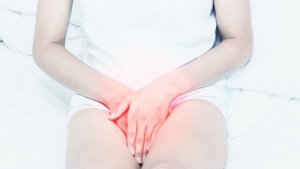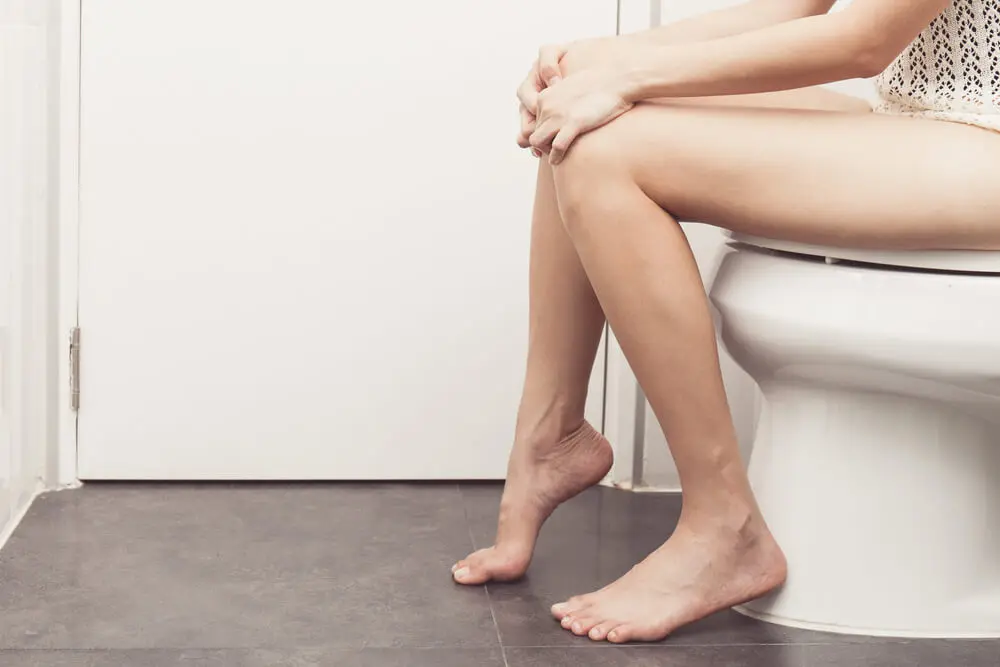6 Recommendations to Get Rid of Cystitis

One of the most annoying urinary problems you can develop is cystitis. It causes the immediate urge to go to the bathroom. In addition, there’s a burning sensation while urinating. These two things often prevent us from continuing with our daily lives and often make us feel ill. Do you know how to get rid of cystitis?
This condition develops when bacteria get into the walls of the urethra causing it to become inflamed. Although it is not often a serious infection, it causes discomfort that can be difficult to cope with if not treated properly.
Anyone exposed to microorganisms or irritants can develop it. However, it’s more frequent in women, since their urethra is shorter and promotes the passage of microbes inwards. While symptoms typically improve in a matter of days, it’s a good idea to incorporate some of the following recommendations to speed up the recovery time. Here they are!
How to recognize and get rid of cystitis

Some patients may confuse cystitis with other types of vaginal or urinary infections. However, almost always there are characteristic symptoms that allow us to identify it without so much difficulty. The signs that indicate cystitis are:
- You constantly have the urge to pee
- Pelvic pain or burning when urinating
- A feeling of irritation and reduced urination
- Bloody urine
- Cloudy urine with a strong odor
- Pain that goes from the lower back to the pelvic region
- Pressure in the lower abdomen
- Slight fever
Recommendations that you should follow to eliminate cystitis
Treatment to eliminate cystitis sometimes requires antibiotics and anti-inflammatory medications. However, you can generally prevent discomfort with some lifestyle changes.
1. Increase water consumption

One of the essential steps to get rid of cystitis is to ensure adequate consumption of water and healthy fluids. Although some ignore it, dehydration is one of the main factors that affect cystitis and other urinary infections. When there are not enough fluids, the kidneys reduce their functions and don’t produce enough urine. Therefore, by altering the environment in the bladder, bacteria grow uncontrollably. In addition, urinating also helps to move the bacteria outwards.
Advice:
- Drink about 8 glasses of water a day. If you prefer, make natural juices, broths, and infusions to meet this requirement.
2. Avoid irritating foods
Although cystitis is caused mainly by the growth of bacteria, some irritants can influence their development, or complicate their symptoms. Therefore, it’s essential to try to limit the foods that contain them for effective treatment.
Advice:
- Limit the consumption of alcohol and caffeine. Also, try to avoid tobacco and carbonated soft drinks.
Check out this article: The Causes of Cystitis After Having Sex
3. Urinate every 2 or 3 hours

Holding urine in your bladder for a long time is one of the triggers of this type of infection. In fact, urinating helps to remove bacteria from the bladder, maintaining a balanced pH in the urinary system.
Advice:
- Try to go to the bathroom every 2 or 3 hours. If you need to before the suggested time, do it. Similarly, try to urinate before and after having sex.
4. Caring for intimate hygiene
Keep an eye out! Bad practice of intimate hygiene habits can cause repeated episodes of cystitis. In fact, up to 80% of the bacteria that produce this infection comes from an incorrect cleaning of the genital area.
Advice:
- To avoid microbes from the anal region getting to the vagina, cleanse and dry from front to back. If possible, take a shower after bowel movements and after having sex.
- Using intimate soaps that are suited for your genital area is also a good option. These keep the pH of the vagina at an appropriate level, avoiding the proliferation of bacteria or fungi.
5. Choose cotton underwear
Although it may seem unimportant, opt for cotton underwear as it has many benefits for eliminating cystitis. This material is more “breathable” which prevents an adequate environment for the growth of bacteria.
Advice:
- Check the labels of the undergarments and verify that more than 90% of your material is cotton. Additionally, choose an appropriate size, because if they are too tight they increase the temperature and humidity in the area.
Check out this article: 5 Herbal Treatments for Cystitis
6. Drink cranberry juice
The antioxidant and anti-inflammatory properties of cranberry juice can help get rid of cystitis without the need for medication. Although it isn’t a miracle product against the symptoms, its intake regulates the pH of the urine and facilitates the expulsion of bacteria.
Advice:
- To help to get rid of cystitis, drink cranberry juice twice a day. Optionally, use it as a preventive at least 3 times a week.
- Also, the combination of cranberry juice and a probiotic has been especially successful for its prevention and treatment. Consult your pharmacist about the possibility of taking a probiotic to regulate the microbiota of your genital area.
Did you just identify the symptoms of cystitis? Then, start treating them with these recommendations. If there is no improvement in a couple of days, see a doctor.
All cited sources were thoroughly reviewed by our team to ensure their quality, reliability, currency, and validity. The bibliography of this article was considered reliable and of academic or scientific accuracy.
- Bondavalli, C., Dall’Oglio, B., Schiavon, L., Luciano, M., Guatelli, S., Parma, P., … De Luise, E. (2004). Interstitial cystitis. In Archivio Italiano di Urologia e Andrologia. https://doi.org/10.3109/15360288.2010.548850
- Barski, D., & Otto, T. (2014). Cystitis. In Urology at a Glance. https://doi.org/10.1007/978-3-642-54859-8_45
- Bogart, L. M., Berry, S. H., & Clemens, J. Q. (2007). Symptoms of Interstitial Cystitis, Painful Bladder Syndrome and Similar Diseases in Women: A Systematic Review. Journal of Urology. https://doi.org/10.1016/j.juro.2006.09.032
- Borges, G., Degeneve, A., Mullen, W., & Crozier, A. (2010). Identification of flavonoid and phenolic antioxidants in black currants, blueberries, raspberries, red currants, and cranberries. Journal of Agricultural and Food Chemistry. https://doi.org/10.1021/jf902263n
This text is provided for informational purposes only and does not replace consultation with a professional. If in doubt, consult your specialist.








